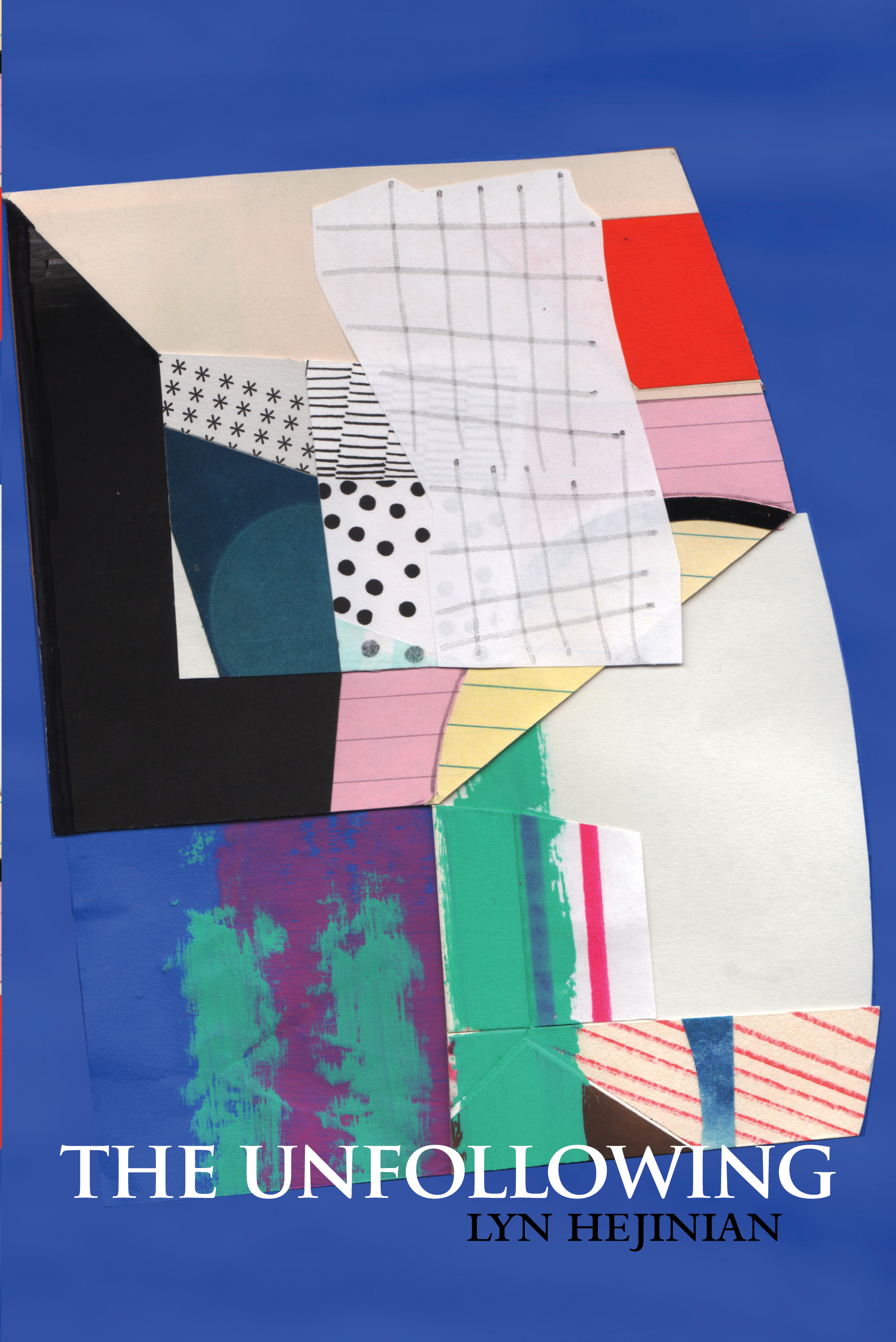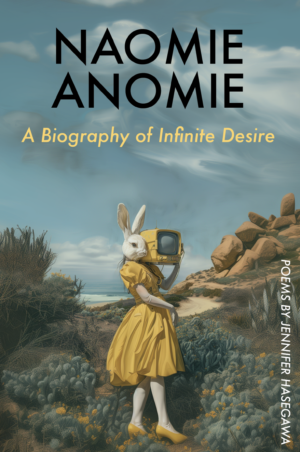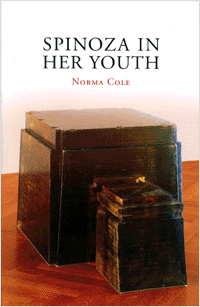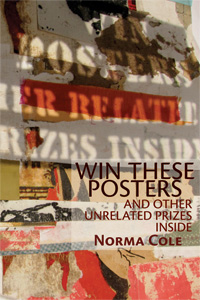Description
The Unfollowing is a sequence of elegies, mourning public as well as personal loss. The grief is not coherent. Though the poems are each fourteen lines long, they are not sonnets but anti-sonnets. They are composed entirely of non-sequiturs, with the intention of demonstrating, if not achieving, a refusal to follow aesthetic proprieties, and a rejection of the logic of mortality and of capitalism. As the author sees it, outrage, hilarity, anxiety, and ribaldry are not easily separated in the play of human emotions. And they are all, and sometimes equally, the proper, anarchic medium for staying alive.
But everything here feels like it follows! Following is shown to be a sound. Precisely drawn each line sounds expected but surprises, delights, shocks, saddens, etcetera. This is a long poem, but some of its individual poems are masterpieces. A long life punctuated by the adieux of family and friends (ones you haven’t yet followed) creates a fruitful bitterness, where you laugh and mope and kick at the big witch called Nobody There. A thoroughly enjoyable book, if you’re old enough to understand it.
Alice Notley, author of A Culture of One
Lyn Hejinian’s poetic investigations of the non-linear, of the non-sequential have familiarized readers with stops or endings that are not closure. Her work has experimented with our perception of the pick-up, the point of up-take, the beginning of conscious attention across the gap between stop and start. Now with her new poem,Unfollowing, she is guiding us into experiencing this space, this gap as a present. She makes us come to view each sequence—sentence, utterance—as an ever-renewing whole, and view the subject of this experiment, the “unfollowing” as a state to be enjoyed and even surprised and mesmerized by its even existing. The closest comparison I can find to reading this work is suddenly coming upon another of the numberless discovery states of meditation.
Ed Roberson, author of To See The Earth Before The End of The World
If the sonnet is the most logical form of Western poetic patterns, Lyn Hejinian’s brilliant The Unfollowing is a long act of disobedience to the sovereignty of reason. Logic, like the icy music of the sonnet at its worst, always follows. But in life—and death—events don’t come one after the other with swaggering synthesis. Instead, our experiences are uneven; as she writes, “into the disordered shortening of a circle comes this little fury, this abdicated panic.” If order is the great system which The Unfollowing rejects, it doesn’t envision chaos either. Not exactly. Rather, this extraordinary asequential sequence of poems forges new freshnesses, deep down things, just as they are, and as they come into the “disordered shortening of a circle.” Her radical unfealty to the law permits play, aphorism, wisdom and wit to accumulate. Inside this mass is Hejinian’s great heart and wisdom. Along the way, the world’s great philosophers (Hegel, Dickens, Stein, Audrey Hepburn, etc) are arrayed in whatever rank she prefers them. In The Unfollowing, all bets are on. “And so we’ve come to Chapter LIX, in which I learn that I have failed / Can you believe this shit.”
Brandon Brown, author of The Good Life
About the Author
Reviews
Excerpt
Lyn Hejinian is a poet, essayist, teacher, and translator. Recent books Her academic work is addressed principally to modernist, postmodern, and contemporary poetry and poetics, with a particular interest in avant-garde movements and the social practices they entail. She is the co-director (with Travis Ortiz) of Atelos, a literary project commissioning and publishing cross-genre work by poets. In addition to her literary and academic work, she has in recent years been involved in anti-privatization activism at the University of California, Berkeley, where she serves as the John F. Hotchkis Professor of English.
A brief interview with Lyn Hejinian
(conducted by Rusty Morrison)
Lyn, what an honor and pleasure it is for Omnidawn to be the publishers of THE UNFOLLOWING. This work engages so many spheres of relevancy to any reader—loss on every level, from heart-rendingly personal to apocalyptically global. In your Preface, you speak to the inception of the work, but I wonder if you could elaborate on any aspect of the question of how the work began for you, which seems to me inextricably interlinked with the title of this work—“Unfollowing” is not simple negation: “un-” as prefix suggests to me that one must first entertain an awareness of what “following” means, if one is to truly enact an active un-doing.
Thank you, Rusty, for your kind words and for the insight into the quandary that beset The Unfollowing. Not for the first time, you have a totally great awareness that something is compelling my work and know what it is. I tend to write from the midst of a quandary and you spot what the principal quandary driving The Unfollowing is, namely illogical status of death in the context of life. The primary biological task of any living being is to live. Or, to put it another way, the central imperative for mortal beings is to remain immortal (deathless). But mortal beings are always just that—living deathward. Paradoxically, one can’t be immortal until one has died.
The “Preface” to the book was written at the request of the editors of a terrific literary journal with the (outside of the Kentucky coal mine regions) unpromising name Jelly Bucket. “Jelly Bucket” is what the lunchbox a miner carries is called. They invited me to send some work, I sent some poems from The Unfollowing, they accepted them and asked for a statement of some kind. What I wrote was very much written retrospectively, when I could make some metaphysically speculative sense of the text. In fact, in the actual process of writing each poem, I was most definitely flailing.
But then again, that was somehow the truth of the moments—a number of them, alas—the moments at which one faces the death of another, or of others.
By the way—I want to say that the moment of facing someone’s death isn’t always gloomy. Perhaps it should be—hilarity (close cousin to hysteria) is not a proper response. But then again, we don’t always get things right.
In each of your books of poetry, a unique convergence of form and content allows a reader to experience anew that the work of the poem is “not about the world but is in it” (from The Language of Inquiry). In your Preface to this text, you discuss your choice of constraints for this manuscript. I wonder if you might reflect again on that choice, and perhaps talk about the ways that, despite the elegiac heart of this work, the circulatory system of its intentionally dislogical, disruptive nature is one that affirms, as you say “a revolutionary practice of everyday life.” As you describe, so lucidly, in The Language of Inquiry, “[c]omposition by juxtaposition presents observed phenomena without merging them, preserving their discrete particularity while attempting to also represent the matrix of their proximities.” And, that it is the work of the explorer, albeit in any medium: “to discover the tangibility and singular distinctness of the world’s exuberant details and individualities without spiriting them away from each other.”
My decision to write a set of fourteen-line poems—to write what is likely to be deemed a sonnet sequence—was, perhaps, itself illogical. The sonnet is traditionally a vehicle for elegantly logical thought, so to use the sonnet, or something formally sonnet-like, as a site for jittery discontinuity doesn’t make sense. But, in thinking about your question, or about the phrase you quote from the end of the “Preface” to The Unfollowing, where I speak, longingly, of “a revolutionary practice of everyday life,” it may be that it is precisely in its disjunctures—in its myriad of unrelated facets and incommensurable scales of value—that everyday life itself maintains its revolutionary struggle to disempower death.
The real difficulty I encountered in writing The Unfollowing was in composing non-sequiturs. It is very hard to find things that are completely unrelated to each other. Indeed, it is generally impossible—not because all things are connected (they aren’t) but because the human imagination can connect anything to anything. We forge linkages at every moment of the day and night, until we are suddenly without an ability to forge anything at all.
You introduced us to the artist, and then you were deeply engaged in the selection of the image that is used in the cover design for this book. Would you describe your considerations regarding the cover image? How does this cover align with your intentions for the book?
I met Sofie Ramos as she was close to finishing her MFA degree in the Department of Art Practice at the University of California-Berkeley. This was a year or two ago now. Some of her work at the time was text-based. I thought of them as word panels—lexical surfaces. We talked about parts of speech: why more nouns than prepositions, etc.? And then (I truly don’t remember how, though the logic may be obvious) we found ourselves talking first about patterns and then about everyday life. I have in recent years been teaching a grad seminar at UC Berkeley addressed to “everyday life.” The course has various iterations: “The Turn to Language and the Writing of Everyday Life,” “Late Capitalism and the Writing of Everyday Life,” “Allegories of Late Capitalism and the Writing of Everyday Life.” The readings change to some extent, the concern remains: what are we doing and what does that doing look like? Even in our first conversation, Sofie and I found ourselves suddenly at high velocity camaraderie. Patterns, laboriousness, housekeeping, vivacious aesthetics—we began, and have continue, to pursue these lines of thought. For the cover of The Unfollowing I wanted something off-balance, illogical, gorgeous (I admit to this flaw in my political position)—something tragic and brilliant and funny and impossible. Sofie puts all those elements together, or so I believe. I asked if she’d consider doing the cover of the book. She said she’d try to come up with something. We met a couple of weeks later and she had some 30 or so “sketches,” any one of which would have been amazing. Women in everyday life—what can we say about them? Let’s start by saying that they do an endless work and that the resulting patters are bright and resilient and even death can’t erase them.
“In her poignant yet pointed introduction, the prolific ¬Hejinian (My Life and My Life in the Nineties), a real poet’s poet, explains that while the pieces in this new collection are all 14 lines long, they are not, properly speaking, sonnets, which unfold logically. The poems here, occasioned by the death of a young family member from cancer, don’t so much unfold as spill forth in strings of seemingly unrelated thought. Yet there’s logic in a larger sense, a beautiful and bracing show of how uncertain life can be as it tumbles and turns onto so many different paths. “Every minute proves that reality is conditional,” says Hejinian in a poem that moves from Abyssinia to a woman with a pink bag to an afternoon séance. Thus does she brilliantly ¬articulate mourning.”
“This book is jam-packed with imagery of all stripes, exclamations, aphorisms, facts, lies, and flights of rhetoric and imagination. While Hejinian’s form addresses the incoherence one feels in the face of death, the content responds with defiance.”
“The Unfollowing consists of seventy-seven fourteen-line elegies composed of non sequiturs (a phrase that literally means it does not follow), conceptually upending the traditional sonnet’s assumption of logical progression. The state of grief—this should not have followed, but it did—necessitates the disruption of coherent trajectory. ?’
Things predicted are always restricted,?’writes Hejinian; she might agree with Simone Weil’s claim, ‘?We must leave . . . the belief in the providential ordering of events.’Hejinian’s forthrightness in the preface—as well as the personal nature of the loss—creates a sharp vulnerability from the outset.”
Insisting on a non-sequiturial process allows Hejinian to evoke affective experience without simplifying or encapsulating: writing so that “nothing follow[s] logically” (9) becomes an analogical algorithm for getting at the unknowable and unacceptable, a process that opens a differential space for elegy. . . . I found that reading The Unfollowing starts to conjure a personality, starts to feel like accompanying a witty and shrewd person on a long car trip . . . This companionability — the hortative “Let’s go now” (84) — becomes the most convincing, most trustworthy expression of a capacity to mourn collectively the catastrophes of the public sphere.
4
One spring the wise guys booming one paraded: boom: 1
The next thing they knew, it was a warm day in spring, and each had several
deaths to mourn
Is this another sphinx trick, a hole, a minus-device like a mad wave
Up go the shades, but there’s no light outside to be let in
She concentrated for, she identified in, she told to
They who accomplish banging gather, they who diminish do so proudly
Half is done with a quarter to spend by a worrywart wearing sunglasses
The sun is too coherent, the egg in the glacier hatches out mice
Mother!
As generous as a caterpillar she has given her very body away
Now we witness with the senses and materiality is singled out
Mad manifest squares, the semantics of an evil activity
The phrase, this stream, among wolves
How vulgar the vulnerability of the earholes, the armholes—of anything that
serves as a window of the body to the world





